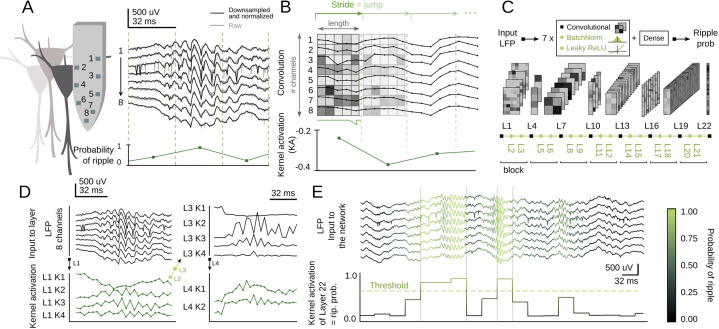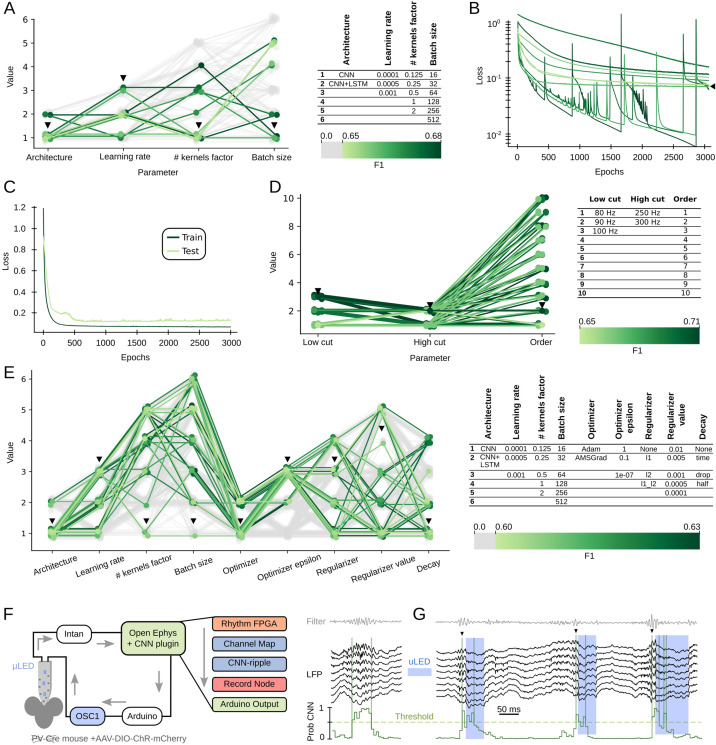Figure 1. Convolutional neural network (CNN) definition and operation.
(A) Example of a sharp-wave ripple (SWR) event recorded with 8-channel silicon probes in the dorsal CA1 hippocampus of head-fixed awake mice. Vertical lines mark the analysis window (32 ms). The probability of SWR event from each window is shown at bottom. (B) Example of L1 kernel operation and calculation of the kernel activation (KA) signal. (C) Network architecture consists of seven blocks of one Convolutional layer+one BatchNorm layer+one Leaky ReLU layer each (layers 1–21). Dense layer 22 provides the CNN output as the SWR probability. (D) Examples of KA for layers 1–4 resulting from the SWR event shown in A. Note how the 8-channel local field potential (LFP) input is progressively transformed to capture different features of the event. (E) Example of the CNN output (i.e. KA of layer 22) at 32 ms resolution. A probability threshold can be used to identify SWR events. Note that some events can be predicted well in advance.


